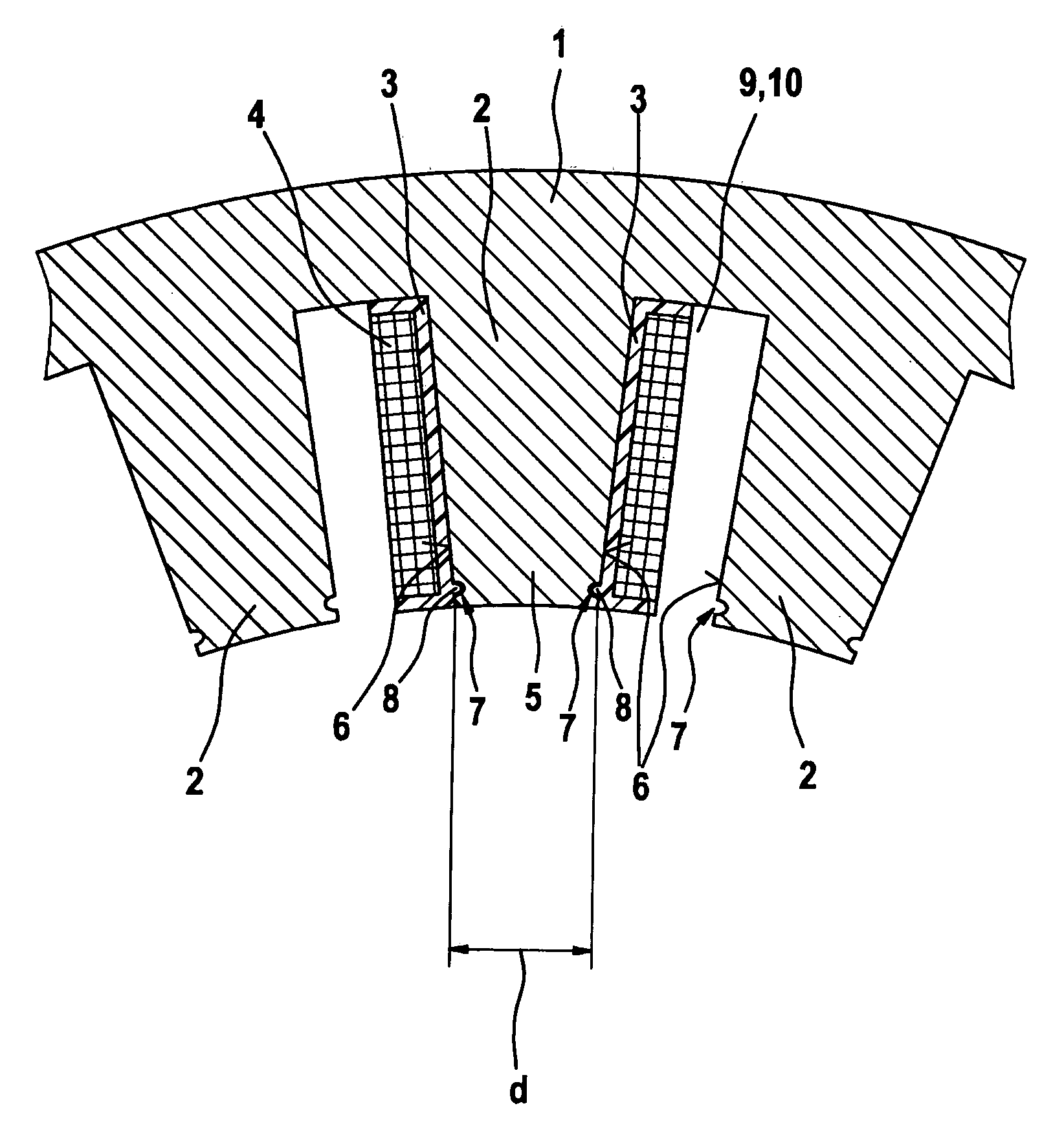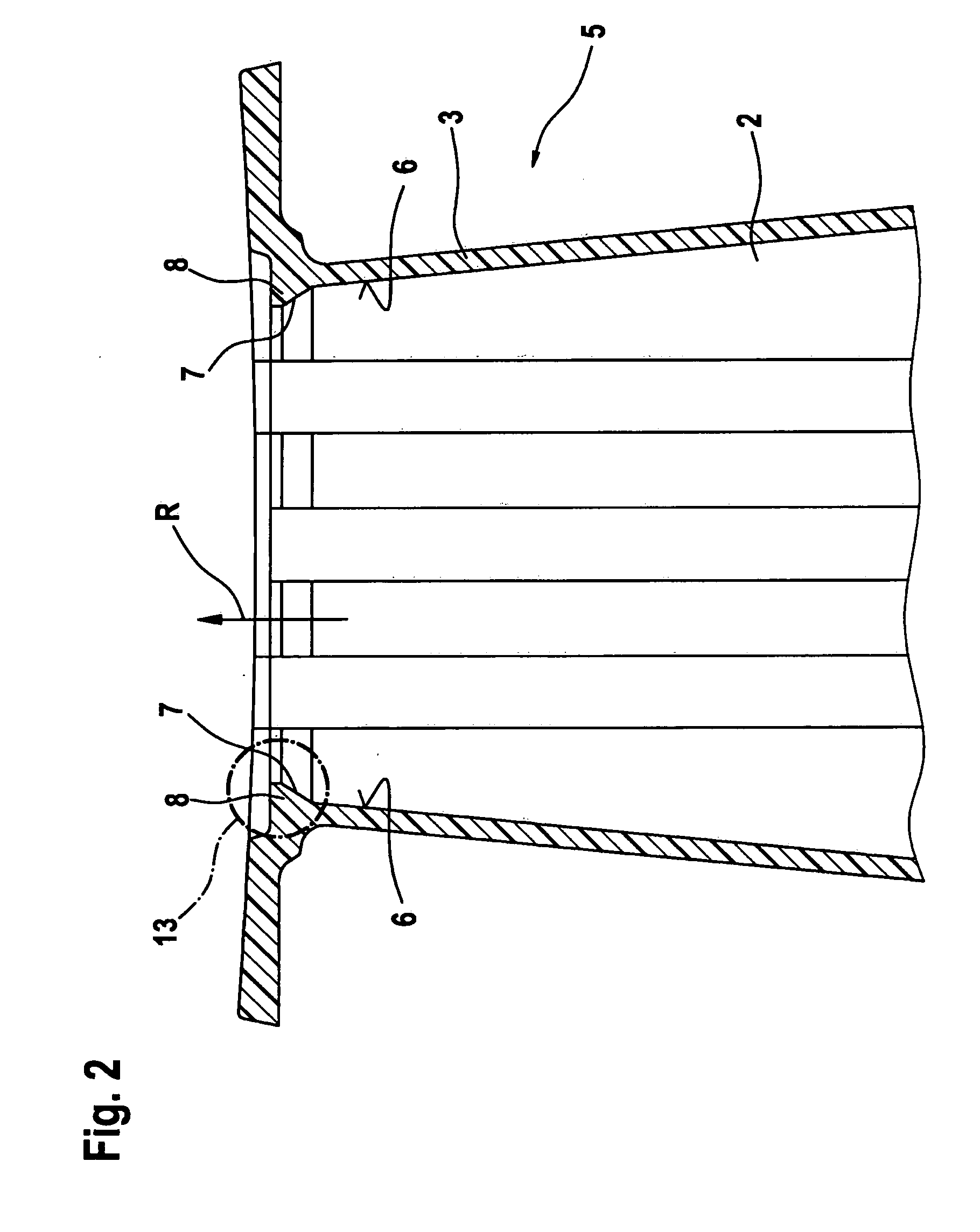Stator of an electric machine
a technology of electric machines and stabilizers, which is applied in the direction of windings, dynamo-electric components, insulation materials of windings, etc., can solve the problems of inability to insert as many windings, inability to achieve the effect of high operational reliability, and limiting the achievable copper filling factor of methods, etc., to achieve simple and cost-effective manufacturing and high operational reliability.
- Summary
- Abstract
- Description
- Claims
- Application Information
AI Technical Summary
Benefits of technology
Problems solved by technology
Method used
Image
Examples
Embodiment Construction
[0019]FIG. 1 shows a cross-sectional view of a segment of a hollow stator 1 of an electric machine (not shown) of an example embodiment of the present invention. Stator 1 has stator teeth 2 on its inner side, onto which a bobbin 3 is slid entirely, its longitudinal orientation being essentially identical to that of stator tooth 2. Bobbin 3 bears a coil 4. In an embodiment, bobbin 3 bears a coil 4 wound outside of the stator onto bobbin 3. In an embodiment, bobbin 3 is formed so as to embrace stator tooth 2 entirely on all sides. In an embodiment, it is developed in the form of bobbins known from other areas of the art, with the provision that its inner geometry is adapted to the geometry of stator tooth 2 in such a way that it may be slid entirely onto stator tooth 2. In am embodiment, in its head region 5, stator tooth 2 has on opposite tooth faces 6 respectively an undercut 7 into which a latch 8 engages, which is formed on the inner side on bobbin 3, in such a way that it reaches...
PUM
 Login to View More
Login to View More Abstract
Description
Claims
Application Information
 Login to View More
Login to View More - R&D
- Intellectual Property
- Life Sciences
- Materials
- Tech Scout
- Unparalleled Data Quality
- Higher Quality Content
- 60% Fewer Hallucinations
Browse by: Latest US Patents, China's latest patents, Technical Efficacy Thesaurus, Application Domain, Technology Topic, Popular Technical Reports.
© 2025 PatSnap. All rights reserved.Legal|Privacy policy|Modern Slavery Act Transparency Statement|Sitemap|About US| Contact US: help@patsnap.com



